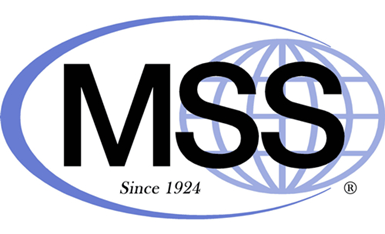MSS revises standards SP-6 and SP-129
The Manufacturers Standardization Society (MSS) of the Valve and Fittings Industry has revised and published standards SP-6 and SP-129, announced in two press releases on Sept. 30.
#standards
Edited by Margo Ellis

The Manufacturers Standardization Society (MSS) of the Valve and Fittings Industry has revised and published standards SP-6 and SP-129, announced in two press releases on Sept. 30.
The first is the seminal SP-6-2021, Standard Finishes for Contact Faces of Pipe Flanges and Connecting-End Flanges of Valves and Fittings. For more than 91 years, SP-6 for standard contact face finishes has served as an industry norm and is referenced in many other technical documents. As one of MSS’s first standards developed, it continues to define a standardized finish for gasket contact faces of pipe flanges and connecting-end flanges of valves and fittings. This Standard Practice is also intended for applications to products for which ASME B16 Standards do not contain complete facing finish requirements or for which there are no such standards.
SP-6 continues to be maintained under the consensus of MSS Technical Committee 102, Iron Flanges & Flanged Fittings (primary), Technical Committee 110, Steel Flanges & Flanged Fittings (secondary), and Technical Committee 201, Non-Ferrous Fittings and Flanges (secondary).
The second revised standard is SP-129-2021, Copper-Nickel Fittings. SP-129 has served the industry for more than 18 years—establishing requirements for copper-nickel fittings from Nominal Pipe Size (NPS) 1/4 through NPS 12 (or as noted), for use with pipe manufactured to one of the following standards: MIL-T-16420K, ASTM B466/B466M, ASTM B467. SP-129 continues to be maintained under the consensus of MSS Technical Committee 201, Non-Ferrous Fittings and Flanges.
The revised Standard Practices are now available from authorized U.S. and global distributors. They have been published in an electronic version (PDF) and in book format.
RELATED CONTENT
-
Updated Piping Codes and Valve Standards
As with every intended use for valves, piping carries its own set of standards that valve companies and users need to understand.
-
Fugitive Emissions Standards for Valves
API, ISO and TA Luft all have their own set of standards to control emissions. What are the differences and how do they compare?
-
Standards for Actuator/Gearbox Flanges
“Many variations in valve and actuator dimensions and characteristics have come into play especially now that we have worldwide vendors,” said Paul Souza, training manager at AUMA Actuators in a presentation at the Valve Manufacturers Association Virtual Valve Forum in November 2020.







 Unloading large gate valve.jpg;maxWidth=214)


